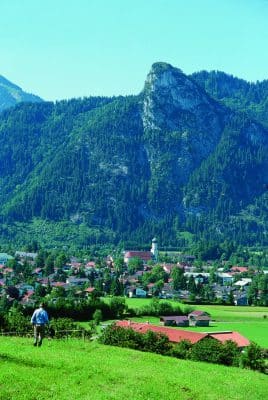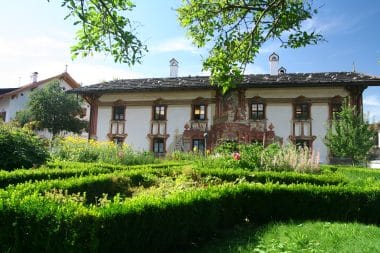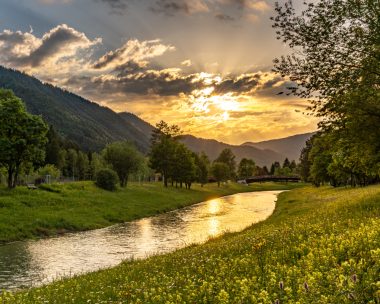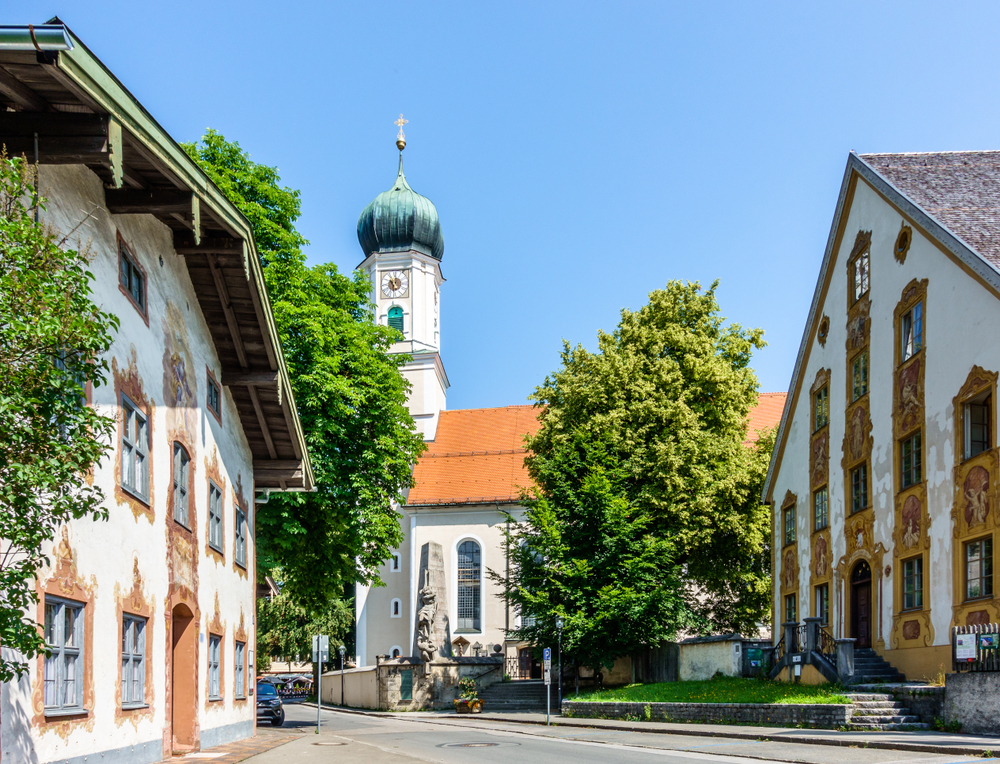The sky is white-blue, the peaks are snow-covered, the house facades in the pretty villages are brightly painted. No question: There are many reasons for a holiday in Bavaria, because in this southernmost of all federal states there are not only physical but also a number of mental pleasures. In the numerous monasteries and abbeys as retreats of reflection or in Oberammergau, where the Celts once settled in a river valley, where Romans felt at home and the legendary Emperor Ludwig endowed the inhabitants with some privileges. Since the 19th century, Oberammergau, the workshop of the Lüftl painters, has no longer been a blank spot on the tourist map. This is where the famous carvers of God are at home and where amateurs and professionals strive every ten years to trace the suffering of Christ in a Passion Play.
A vow after the “Black Death”

The year 1633 entered the history books of Oberammergau with deep black letters, because the plague caused the number of inhabitants to shrink. The “Black Death” also destroyed everything at the foot of the Ammergau Alps. The social bonds of people and ultimately all moral values. For some, life was short, and not a few believed that the plague was nothing more than the wrath of the Lord God who had come to earth. In Oberammergau, too, the faithful began to flagellate themselves, venerate the saints and set out on pilgrimages. According to historical documents, eighty inhabitants of the Bavarian town died from the plague in 1633, and those who were spared by the plague solemnly vowed to perform a Passion Play from now on.
The plague came on the day of the church consecration festival
There were quite a few people in Oberammergau who saw a sign from the Lord in the fact that the plague arrived in their tranquil village on the church consecration festival of 1632. In the vicinity of the Ettal Monastery, which was once founded by Emperor Ludwig the Bavarian also after a vow, the inhabitants of Oberammergau developed a hectic activity in the first years of their Passion Play. They understood the re-enactment of the Passion of Christ as an act of their own personal religious edification. The original texts of the Passion Play were probably provided by the Augsburg Meistersinger Sebastian Wild and an unknown monk from the Ettal Monastery.
A playhouse for 5,200 visitors
Every ten years, the Bavarian village is now transformed into an apiary, because guests from all over the world come at the time of the Passion Play. And the inhabitants of Oberammergau are also transformed during this time. Woodcarvers then become Roman legionnaires, farmers amateur actors. For every third inhabitant of this place, it is a matter of course to participate in the Passion. Most of them, however, are content with the role of an extra, and those who are chosen to slip into the leading role of Jesus of Nazareth breathe about a hundred times during the season: “It is finished…” The Schauspielhaus, which was built in its current form in 1930, holds about 5,200 visitors. Over time, the technology of the open-air stage was modernized, the façade was embellished and the fire protection improved.
To the woodcarvers in the “Pilatushaus”

A visit to the Schauspielhaus and thus the traditional site of the Passion is a must for visitors on excursions in Oberammergau at all times. But you can also look over the shoulders of the woodcarvers in the so-called “Pilatushaus” between mid-May and mid-October. By the way, guests can hike to the sights of Oberammergau on foot, because the place is manageable. The parish church of St. Peter and Paul is undoubtedly a gem. It is an important example of the Baroque style of southern Germany and was built until the middle of the 18th century. Inside the church, the rich stucco work and the frescoes on the ceilings and walls catch the eye. The high altar shows the Mother of God as a heavenly helper. The organ of the church was installed in 1893.
The longest year-round toboggan run in the world in Oberammergau

During a stroll through Oberammergau, it is noticeable that the facades of almost all houses have decorative elements and representations. The basics of this technique were provided by a local – the Oberammergau painter Franz Seraph Zwink in the 18th century. The artist shaped the image of the theatre venue with his style. In 2013, a year-round toboggan run was built on the Kolbensattel. If you sit on a rail-controlled sled, you race down into the valley at a maximum speed of forty kilometers per hour. With a distance of 2.5 kilometres and an altitude difference of four hundred metres, this is the longest weatherproof toboggan run in the world.
The Oberammergau Museum has established itself on the beautiful Dorfstraße. The museum’s gems include the historic church nativity scene and several exhibits of local carving. Special exhibitions are held in the attic from time to time. As part of a guided tour of the so-called “Eisenhower Museum”, visitors learn interesting facts about the life of the 34th President of the United States.


